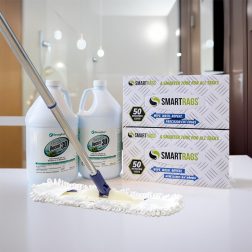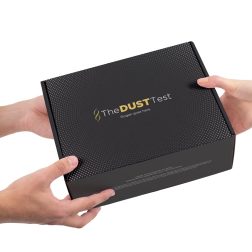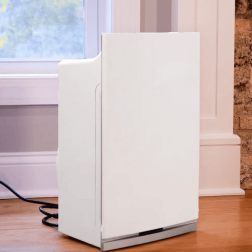No products in the cart.
Mold Resources
Have you ever wondered how mold spreads? If not here’s a quick 101 lesson. The more you know, the better you’ll be able to prevent microbial growth from happening in your home.
How Mold Spreads: What You Need to Know
It all starts with mold releasing tiny, non-living particles called spores, which are a lot like the seeds of a plant. These spores are incredibly small, usually between 2 and 10 microns, and are invisible to the naked eye. Spores get released into the air by active mold growth and can travel through the air, water, or even on your pets until they find a spot with the right conditions to grow. It’s similar to how pollen can be carried here, there, and everywhere by the wind. If this non-living spore lands on a surface with the elements needed for growth, it will transition into a living colony.
Mold needs three things to grow: moisture, air, and something organic to consume. Once mold spores find these conditions, a colony will develop, spreading even more spores in the process. That’s why deep cleaning the surrounding areas is mandatory after microbial growth is discovered indoors.
It's pretty incredible to think that spores are essentially dormant, “dead” forms of mold and can stay that way indefinitely until they find the right conditions to grow. It’s just not as interesting when it happens in our homes…
Understanding this helps explain how mold spreads so effectively.
Different types of mold produce spores at different rates, and these rates can change with the seasons, much like how plants produce pollen. There’s a lot more pollen during the springtime than there is during the winter! Once spores find the right conditions, they can start growing within hours. That’s why, if you have a leak at home, it’s crucial to dry the area thoroughly within 24-48 hours to prevent mold from growing. This quick action is essential in controlling how mold spreads in your home.
One tricky thing about mold is that you often can't see it when it first starts to grow. It can take up to three weeks before mold becomes visible to the naked eye. This delay makes early detection and prevention critical in managing how mold spreads through your living space and avoiding it growing in the first place. This includes cleaning frequently, working on air purification, annually testing the home for hidden problems, and reducing moisture.
The Dust Test
The Dust Test is a great indicator of what’s going on in your home and can be used annually to ensure there are no hidden problems..
It combines cutting-edge DNA and chemical sequencing technologies to identify the full load of invisible fungal and toxic fragments in any home. This includes determining and quantifying mold species, mycotoxins types, and endotoxins. If you want to know if you have mold, bacteria, or toxins, this is the most cost-effective way to answer that question.
This consumer-based test is one that you can do on your own to collect dust and look for abnormalities. The Dust Test includes a combination of MSQPCR and other testing methods that identify mold, mycotoxins, and endotoxins in one kit. Hence why it’s superior to ERMI Testing. It doesn’t tell you where the problems are but answers the question of whether you have problems. This is a great first step because you then have the data before you bring in an inspector, ensuring that they’re accountable for finding the sources of the problems.
If you’re experiencing chronic symptoms, you should also contact a qualified medical professional familiar with helping clients who are dealing with environmental exposures so that they can help you on the path to healing.
Showing all 3 results
-

HomeCleanse Cleaning
Take your cleaning to the next level buying all the tools we use to keep our clients homes clean. (Perfect...
-
$299.00 – $549.00 Select options -

The Dust Test
Buy product -
Sale

Intellipure Compact Air Purifier
Small in size, but delivers powerful results, reducing airborne microorganisms like mold, viruses, and bacteria.
-
Original price was: $549.00.$229.00Current price is: $229.00. Add to cart
Still Have Questions?
A member of our team is here to help! Click on “Get Started ➤” below to book a consultation with a member of the HOMECLEANSE team. We have a few quick questions that will help us put together a roadmap to solve or prevent all of your mold problems.
Two minutes of your time could lead to better health for you and your family.
